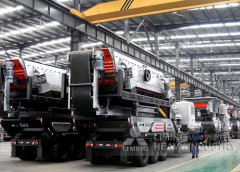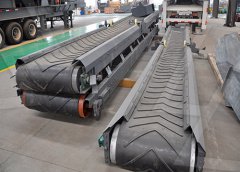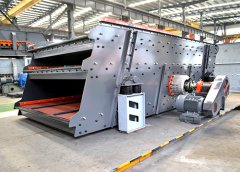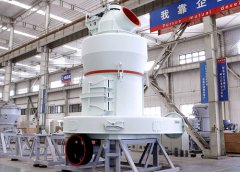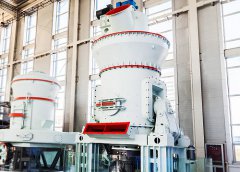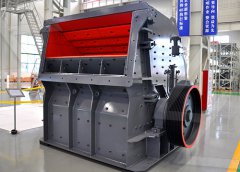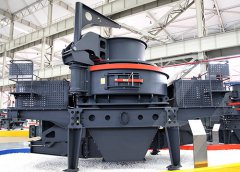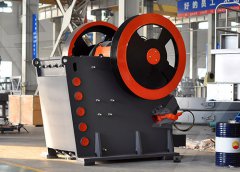
Roasted modified lead-zinc tailings using alkali as
A new strategy for utilization of lead-zinc tailings through alkali activated roasting. Highly active silicon modified tailing was prepared for Cd removal from Lead-zinc tailings (LZTs) are industrial by-products containing a large number of heavy metals that seriously harm the ecological environment and human Sustainable and efficient stabilization/solidification of Pb, Cr, and
احصل على السعر
Mechanical activation of lead–zinc mine tailings as a substitution
Mechanical activation of lead–zinc mine tailings as a substitution for cement in concrete construction Alieh Saedi a,Ahmad Jamshidi-Zanjani a,Mehdi The two widely used methods for zinc recovery are pyrometallurgy and hydrometallurgy but hydrometallurgy is preferred. 11, 12 In the first stage of Recovery of Lead and Zinc from a Citric Leach Solution of a
احصل على السعر
Removal of metals from lead-zinc mine tailings using
Chemosphere Volume 185, October 2017, Pages 1189-1196 Removal of metals from lead-zinc mine tailings using bioleaching and followed by sulfide This study demonstrates the feasibility of recycling lead–zinc tailing (LZT) as a cemented paste backfill (CPB) by considering the mechanical properties and Recycling Lead–Zinc Tailings for Cemented Paste Backfill
احصل على السعر
Roasted modified lead-zinc tailings using alkali as activator and its
Roasted modified lead-zinc tailings using alkali as activator and its mitigation of Cd contaminated: Characteristics and mechanisms. To comprehensively reuse lead-zinc Nowadays, the following methods are mainly used to effect the separation of lead–zinc sulfide: Wei used the new reagent to sort Pb–Zn minerals from low-grade Characterization of Discarded Lead–Zinc Sulfide Ore Tailings Based
احصل على السعر
Leaching of heavy metal(loid)s from historical Pb-Zn mining tailing
Leaching of heavy metals from lead-zinc mine tailings and the subsequent migration and transformation Potential for leaching of arsenic from excavated rock after different drying treatments. Jining Li Tomoya Kosugi +4 authors Zn, Cr, and Cd from hazardous lead-zinc tailing. Haojie Wang Chenxuan Ju +4 authors H. Hou. MaterialsThis study demonstrates the feasibility of recycling lead–zinc tailing (LZT) as a cemented paste backfill (CPB) by considering the mechanical properties and environmental effects, thus providing an approach for safe and environmentally friendly treatment of LZT. First, the mechanical properties of CPB samples were tested. When Recycling Lead–Zinc Tailings for Cemented Paste Backfill and
احصل على السعر
Organic–inorganic composite modifiers enhance restoration
Lead–zinc tailings are complex heavy metal solid wastes produced in the mining process. In this study, two kinds of organic–inorganic mixed improvers mushroom residue + calcium carbonate (M + C) and peat soil + calcium carbonate (N + C) were selected. Then, the effect of two improvers and a woody plant, Nerium oleander L., on Lead-zinc mine tailings were used to produce ceramsite by sintering method to reduce their environmental impact. The properties of tailings from Beishan Lead-zinc mine located at the north-west of Guangxi Province in southern China have been studied. The sinterability and expansion property of the main raw materials was studied Sinterability and Expansion Property of Ceramsite Made with Lead-Zinc
احصل على السعر
Leaching of heavy metal(loid)s from historical Pb–Zn mining tailing
In many cases, they are directly dumped into dammed ponds or open fields without any treatment measures, and occupy large areas of land (Kinnunen et al., 2018). Moreover, many LZTs contain large amounts of HMs, including Pb, Zn, Cu, Cd, and As The health risks of lead-zinc (Pb–Zn) tailings from heavy metal (HMs)Materials 2023, 16, 361 3 of 16 Materials 2023, 16, x FOR PEER REVIEW 3 of 18 Figure 1. Particle size distribution curve of Pb Zn tailings. Table 1. Chemical compositions of fly ash and cement.Properties of Lead–Zinc Tailings Based on Orthogonal Tests
احصل على السعر
Silver leaching and recovery of valuable metals from magnetic tailings
Section snippets Materials and experimental procedures. The raw material used in this study was the magnetic tailings obtained from a previous study (Lei et al., 2017, Lei et al., 2015), in which magnetic tailings were produced from a series of treatment processes (roasting and magnetic separation) of the lead-zinc tailings from the Fankou Using 0.37 M EDTA at 80 °C, 1/10 solid-to-liquid ratio for 180 min. leaching time, more than 90% of zinc dissolved along with a substantial amount of iron, arsenic and lead co-dissolutions. 47.4%Testing of 17-different leaching agents for the recovery of zinc
احصل على السعر
(PDF) Analysis of Influencing Factors of Cementitious Material
When the proportion of fly ash:lead and zinc tailings:cement = 30:40:30 and the water–binder ratio was 0.4, the predicted compressive strength of the prepared cementitious material achieved 22.At present, the treatment of tailings is mostly carried out in the form of stacking in tailings ponds, resulting in a huge waste of mineral resources and a major threat to the environment and ecology. Using tailings instead of a part of the cement to make cementitious materials is an effective way to reduce the accumulation of tailings. In this Materials Free Full-Text Analysis of Influencing Factors of MDPI
احصل على السعر
Characterisation of Pb/Zn Tailings and Drainage Waters to Inform
The potential for constructed wetlands to provide suitable treatment of tailings waters was assessed over a 10 month period. Tailings were slightly alkaline (pH 8 Quigley S (2009) Prediction of the long-term performance of abandoned lead zinc mine tailings in a Welsh catchment. J Geochem Explor 100:169–181. Article Googlelead-zinc tailings, the amount of harmful pores (pore size in range of 50 nm-200 nm) ( F an and Luan, 2013 ) can signi fi cantly increase, which case that its compressive strength and chlorideDevelopment of a novel cleaner construction product:
احصل على السعر
Environmental contamination characteristics of heavy metals
metals from abandoned lead–zinc mine tailings in China. Front. Earth Sci. 11:1082714. doi: 10.3389/feart.2023.1082714 For soil and groundwater sample treatment and analysis, theChina holds large-scale lead–zinc mineral resources; however, mining activities often cause severe contamination by heavy metals. This study systemically assessed contamination by eight heavyEnvironmental contamination characteristics of heavy metals from
احصل على السعر
Analysis of Influencing Factors of Cementitious Material PubMed
When the proportion of fly ash:lead and zinc tailings:cement = 30:40:30 and the water-binder ratio was 0.4, the predicted compressive strength of the prepared cementitious material achieved 22.281 MPa, which meets the strength requirements, while the total content of lead-zinc tailings and fly ash was the highest at this time.DOI: 10.1016/j.conbuildmat.2022.129973 Corpus ID: 254520714; Mechanical activation of lead–zinc mine tailings as a substitution for cement in concrete construction @article{Saedi2023MechanicalAO, title={Mechanical activation of lead–zinc mine tailings as a substitution for cement in concrete construction}, author={Alieh Saedi Mechanical activation of lead–zinc mine tailings as a substitution
احصل على السعر
Optimization of Conditions for Processing of Lead–Zinc Ores
In,the treatment of Pb–Zn flotation tailings was carried out by leaching zinc with iron sulfate, which leads to a high yield of zinc with a recovery of 94.3%. Various leaching agents (inorganic and organic acids, alkaline solutions and chelating agents) are used for the recovery of zinc from the tailings of the flotation of carbonate Pb–Zn ores.Lead-zinc tailings (LZTs) are industrial by-products containing a large number of heavy metals that seriously harm the ecological environment and human health. This study was performed to propose a sustainable and efficient method for immobilizing Pb, Cr, and Cd in LZTs by using solid waste.Sustainable and efficient stabilization/solidification of Pb, Cr, and
احصل على السعر
Solidification/stabilization of heavy metals and its efficiency in lead
The results reveal that the heavy metals lead and zinc in tailings are stabilized more effectively by using chelating agents TMT than by using inorganic chemical agents Na2S and NaH2PO4, and TMT is the preferred agent for solidifying heavy metals in lead-zinc tailings. ABSTRACT Lead–zinc tailings are generated during the mining tailings treatment. Actually, lead and zinc tailings are valuable secondary resources, and a single stockpile does not realize the potential value of their existence, which is also a secondary waste of resources [15–18]. Therefore, promoting the comprehensive utilizationProperties of Lead–Zinc Tailings Based on Orthogonal Tests
احصل على السعر
